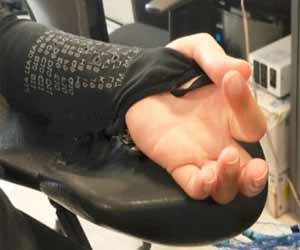Researchers at the Feinstein Institutes for Medical Research, in New York, USA, have used new closed-loop neurostimulation methods and textile-based electrodes to facilitate finger movement and grasp force regulation in quadriplegic patients.
The results have been published in the Springer Nature Journal, Bioelectronic Medicine.
The team of researchers, led by Chad Bouton, Vice President of Advanced Engineering and Professor in the Institute of Bioelectronic Medicine (which is part of the Feinstein Institute) partnered with Alizadeh-Megrazi from Myant Inc.
The participants had a light-weight, wearable sleeve placed on their forearm and electrical stimulation was applied to different electrodes to evoke various movements. Finger extension, flexing and a cylindrical-type grasp was observed in each participant, including the ability to squeeze and support a full 750 ml bottle.
The results show that through controlled electrical stimulation along with the use of light-weight textile electrodes, grasp force can be initiated and regulated in quadriplegic patients.
Read the full story here: https://speciality.medicaldialogues.in/researchers-use-textile-based-electrodes-to-regulate-movements-in-quadriplegics/
“This is a clever and very welcome advance in assistive devices,” said SpinalCure CEO Duncan Wallace.
“It could greatly improve a person’s independence while we work towards restoring full function and feeling through spinal neurostimulation and other emerging treatments.”

